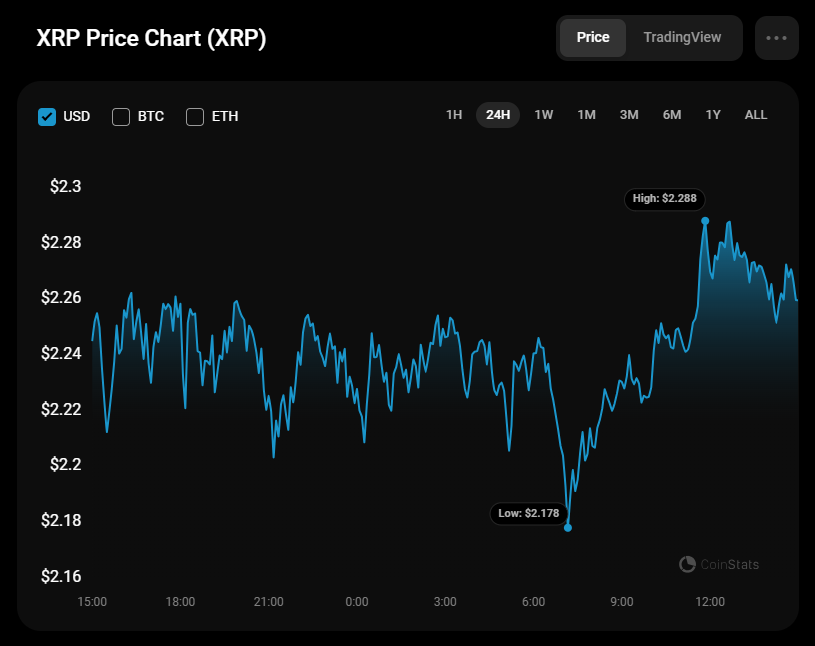Category: Forex News, News
XAU/USD’s downside bias remains intact while below $2,645
- Gold price holds recovery from monthly lows due to year-end unwinding.
- The US Dollar bounces after Friday’s profit-taking slide, despite sluggish US Treasury bond yields.
- Gold price remains a ‘sell-on-bounce’ trade while below 21-day SMA and amid bearish daily RSI
Gold price is looking to extend its recovery from monthly lows into a third day on Monday as buyers hold their grip above the $2,600 mark. However, the further upside appears elusive amid a broad US Dollar (USD) bounce and a pause in the decline of US Treasury bond yields.
Will Gold price extend its recovery momentum?
Markets cashed in on their USD long positions on Friday, taking the excuse of a slight cooldown in the monthly US headline Personal Consumption Expenditures (PCE) Price Index data for November. The Fed’s preferred inflation gauge showed an increase of just 0.1% from October, missing the forecast for a 0.2% growth while the headline PCE Price Index rose 0.1% over the month in November versus the 0.2% increase expected.
This is because the odds for a January interest rate pause by the US Federal Reserve (Fed) remained at around 90% following Wednesday’s hawkish Fed rate cut decision, the CME Group’s FedWatch Tool show.
The US central bank lowered policy rate by 25 basis points (bps) to 4.25%-4.50% range last week, as widely expected. However, the Fed’s Statement of Economic Projections (SEP), the so-called Dot Plot, predicted two quarter-percentage-point rate reductions by the end of 2025. That is half a percentage point less in policy easing next year than officials anticipated as of September.
The US Dollar corrected in sync with the US Treasury bond yields, allowing the non-yielding Gold price extend its upswing from monthly lows of $2,583.
In Monday’s trading so far, Gold price clings to recent gains as USD buyers jump back on the bids, with traders preferring to hold the buck heading into the Christmas holiday break.
The ongoing geopolitical conflict between Israel and Gaza and anticipation of potential protectionism by US President-elect Donald Trump underpin the haven demand for the US Dollar, making the USD-denominated Gold price more expensive for foreign buyers.
Gold traders will likely take cues from the broader market sentiment before placing fresh bets on the bright metal.
Gold price technical analysis: Daily chart
The short-term technical outlook for Gold price remains more or less the same as the downside bias remains intact, with the 14-day Relative Strength Index (RSI) holding below the 50 level.
Recapturing the 21-day Simple Moving Average (SMA) of $2,645 on a daily closing basis is critical to reversing the downtrend. Acceptance above that level will call for a test of the 50-day SMA at $2,669.
Further up, the $2,700 mark will challenge the bearish commitments.
If the recovery fades, Gold sellers retest the 100-day SMA resistance-turned-support at $2,610, below which the monthly low of $2,583 will be threatened.
On a sustained downside, the November 15 and 14 lows at $2,555 and $2,537, respectively, could come into play.
Gold FAQs
Gold has played a key role in human’s history as it has been widely used as a store of value and medium of exchange. Currently, apart from its shine and usage for jewelry, the precious metal is widely seen as a safe-haven asset, meaning that it is considered a good investment during turbulent times. Gold is also widely seen as a hedge against inflation and against depreciating currencies as it doesn’t rely on any specific issuer or government.
Central banks are the biggest Gold holders. In their aim to support their currencies in turbulent times, central banks tend to diversify their reserves and buy Gold to improve the perceived strength of the economy and the currency. High Gold reserves can be a source of trust for a country’s solvency. Central banks added 1,136 tonnes of Gold worth around $70 billion to their reserves in 2022, according to data from the World Gold Council. This is the highest yearly purchase since records began. Central banks from emerging economies such as China, India and Turkey are quickly increasing their Gold reserves.
Gold has an inverse correlation with the US Dollar and US Treasuries, which are both major reserve and safe-haven assets. When the Dollar depreciates, Gold tends to rise, enabling investors and central banks to diversify their assets in turbulent times. Gold is also inversely correlated with risk assets. A rally in the stock market tends to weaken Gold price, while sell-offs in riskier markets tend to favor the precious metal.
The price can move due to a wide range of factors. Geopolitical instability or fears of a deep recession can quickly make Gold price escalate due to its safe-haven status. As a yield-less asset, Gold tends to rise with lower interest rates, while higher cost of money usually weighs down on the yellow metal. Still, most moves depend on how the US Dollar (USD) behaves as the asset is priced in dollars (XAU/USD). A strong Dollar tends to keep the price of Gold controlled, whereas a weaker Dollar is likely to push Gold prices up.
Source link
Written by : Editorial team of BIPNs
Main team of content of bipns.com. Any type of content should be approved by us.
Share this article:








